- This topic has 6,414 replies, 23 voices, and was last updated 2 months, 2 weeks ago by
 Proclaimer.
Proclaimer.
- AuthorPosts
- June 30, 2018 at 2:30 am#831601
 GeneBalthropParticipant
GeneBalthropParticipantMike….Tell me this, if you were given a ride on the iss around the earth, and saw it from outer space yourself, and it was indeed round, would you then change your mind and accept it as truth of a round earth? Or would you think you were being tricked somehow? How far down that path have you gone brother?
Would that destory your faith in GOD and his word, as you indicate it would? If that be true then you are really on shaky ground brother. Surely you have more proof of God and his relationship with you then this FE thing.
Peace and love to you and yours. ….gene
July 1, 2018 at 2:29 am#831642 Dig4truthParticipant
Dig4truthParticipantGene, what if you discovered that the ISS was not what we were told and no one was on it? What if the pictures you saw from high altitudes showed no curve at all? Would that destroy your faith?
July 1, 2018 at 3:38 am#831643 mikeboll64Blocked
mikeboll64BlockedMy newest video using T8’s photo of Mount Ruapehu…
July 1, 2018 at 5:10 am#831645 mikeboll64Blocked
mikeboll64BlockedHi Kathi,
I’m going to make a few short posts regarding that last image you posted…
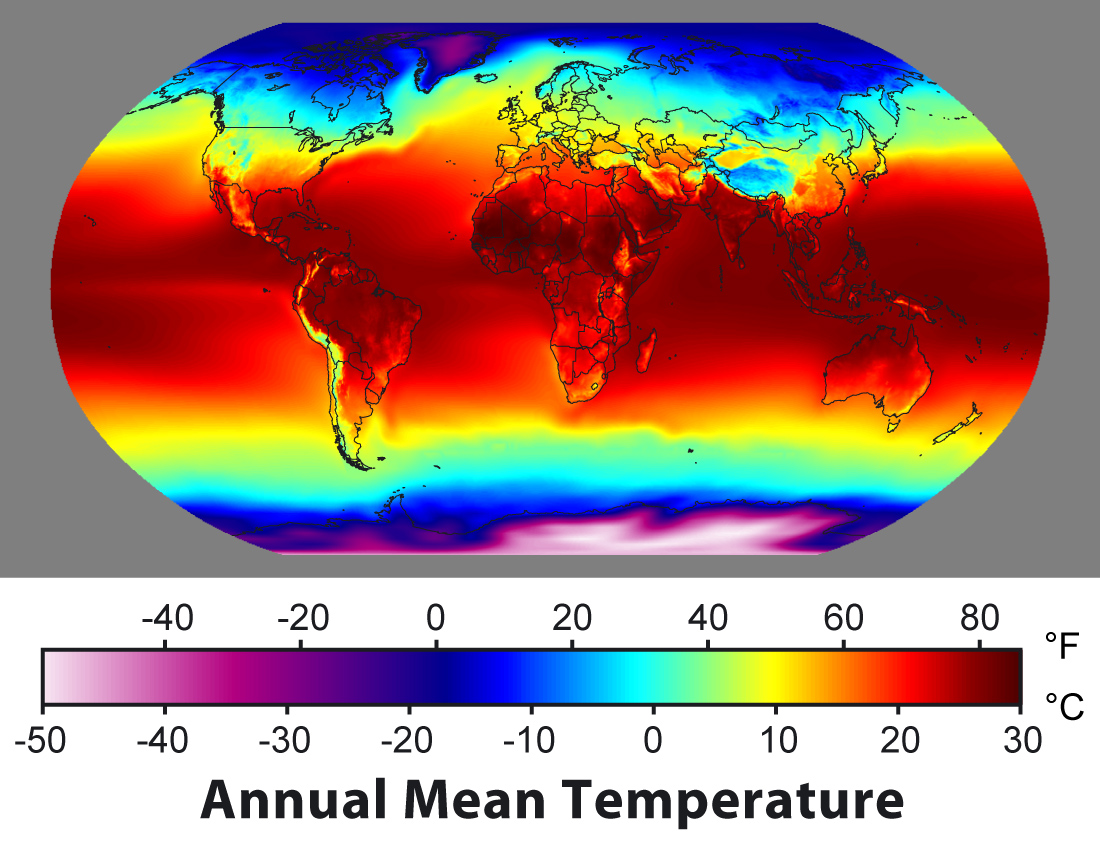
Notice how the highest annual mean temperature is always parallel to the equator. But according to your image, that would be absurd, because of the earth’s alleged 23.4 degree tilt in relation to its orbit around the sun. The temperature pattern above should look more like this…

See? Shouldn’t the consistently warmest path on the earth align with the ecliptic, where the sun’s rays are hitting the earth straight on? What would cause it to have this pattern instead…
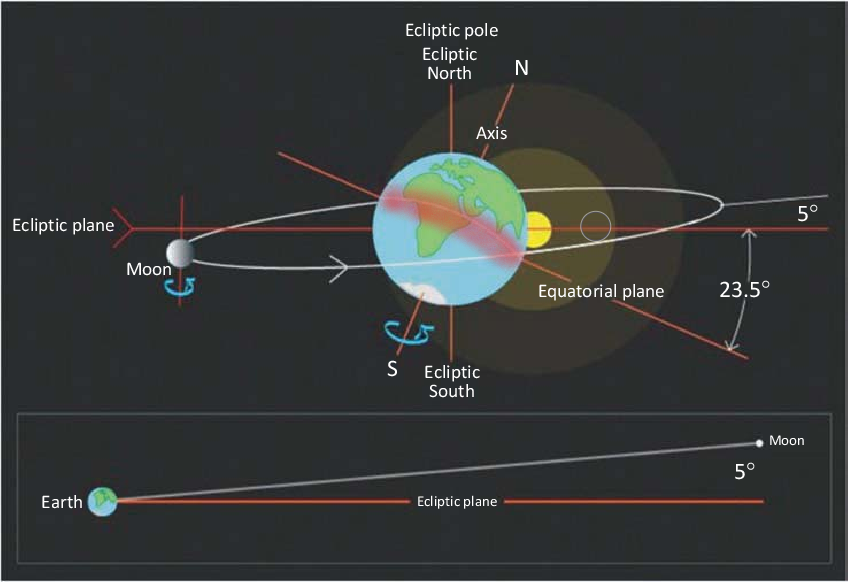
Do you see a problem with your model?
July 1, 2018 at 5:47 am#831650 mikeboll64Blocked
mikeboll64BlockedOkay, next up… Look at Antarctica in your image…
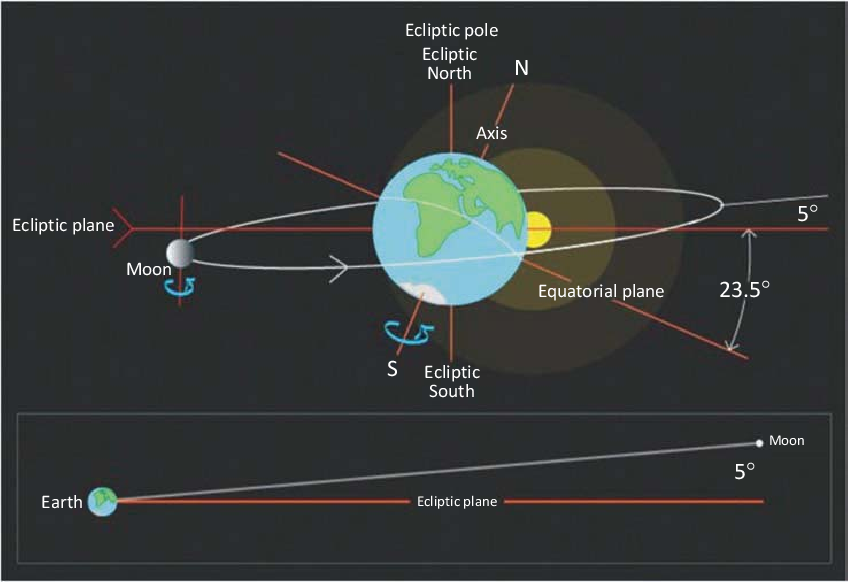
Remember back when we were talking about how it’s summer in the northern hemisphere when the earth is supposedly 3.2 million miles farther away from the sun? And the claim is that’s because the North Pole is tilted towards the sun during that time, right? And remember I called BS because a few thousand miles closer due to a tilt is not going to make up for 3.2 million miles farther away from the heat source – let alone cause it to be even hotter at that time. And you posted a source saying something about the rays hitting at an angle and the heat carrying farther or some nonsense like that. But in your image, the southern hemisphere is tilted towards the sun… AND the earth is reportedly 3.2 million miles closer to the heat source during the southern summer. So using the same argument from your source about angled rays carrying the heat farther or whatever, shouldn’t the south pole experience a MUCH warmer summer than the north pole? Because it has the tilt AND the closer proximity to the heat source working for it, right?
Yet during the arctic summer, the ice thaws, bears come out of hibernation, flowers bloom, birds chirp, bees and mosquitoes buzz, etc. But the antarctic has no indigenous life to speak of. You can’t even find a shrub south of 60 degrees south latitude – let alone a thawing cycle with flowers blooming and animals coming out of hibernation.
Do you see a problem with your model?
July 1, 2018 at 5:56 am#831651 GeneBalthropParticipant
GeneBalthropParticipantDig, apsolutely not,it would not destory my Faith in God AT ALL, not even a ounce, WHY., because my faith in GOD IS NOT BASED ON ANYTHING carnely CONNECTED WITH THE EARTH BEING Flat or not. But it appears you and Mike would completely fall apart and become atheists. Which makes me think how much actual Faith in God you people really have. Would Jesus say to you m “O” YOU OF LITTLE FAITH?
Peace and love to you and yours. …….gene
July 1, 2018 at 6:13 am#831652 mikeboll64Blocked
mikeboll64BlockedAnd finally, we are told about this penumbra and umbra effect, whereby an object is able to cast a diminishing cone-shaped shadow that gets increasingly smaller than the object casting it…
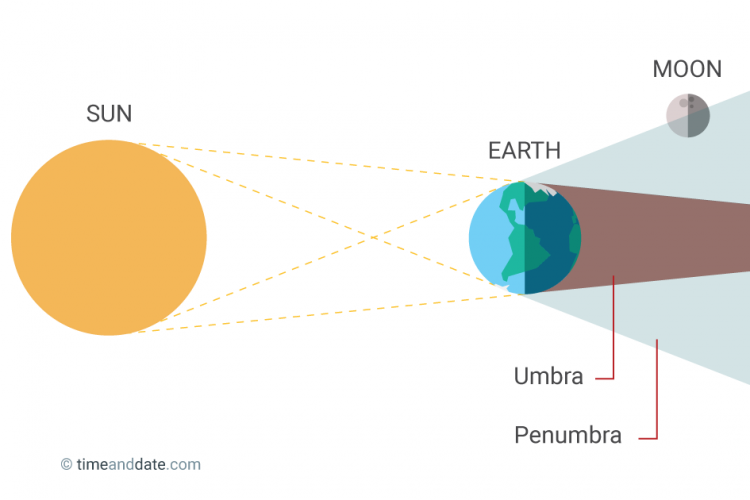
IMO, it is absurd to imagine such a thing happening by means of one light source whose rays are allegedly coming at the object (the earth) in parallel lines. It has never been shown to occur in any laboratory, and we are unable to witness such a thing in real life (despite the graphics you posted with the cylinder casting a skinny little shadow much smaller than itself). I could be wrong, but based on my God-given common sense, if the earth gets between the sun and the moon at all, the shadow of the earth should eclipse the moon every time… because the earth could never cast a shadow smaller than itself – let alone an ever-diminishing cone shaped one that at some point, reverses into an antumbra, which is a cone shaped shadow that grows increasingly larger…
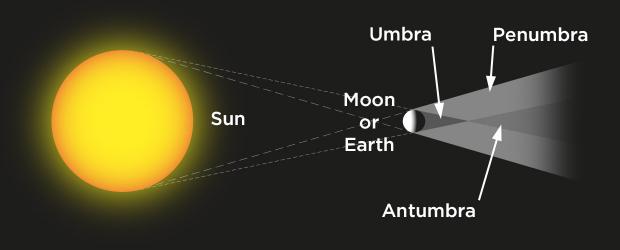
There is no logical reason to believe the moon should only get eclipsed when the earth is directly between the sun and the moon.
July 1, 2018 at 6:24 am#831655 mikeboll64Blocked
mikeboll64BlockedGene: …my faith in GOD IS NOT BASED ON ANYTHING carnely CONNECTED WITH THE EARTH BEING Flat or not. But it appears you and Mike would completely fall apart and become atheists. Which makes me think how much actual Faith in God you people really have.
We have enough faith in God to take His written word at face value – without making excuses for it or twisting it in order to force it to align with the stories of scientism. How about you? Do you have enough faith in God as the Creator of the heavens, the earth, the sea, and everything in them to believe what He Himself tells you about that creation? For example, when He says He created the sun on day four, do you have enough faith in Him to believe Him? Or do you forsake God for the stories of godless men who told you there are trillions of suns, and they all exist before the planets that orbit them?
July 1, 2018 at 6:47 am#831656 mikeboll64Blocked
mikeboll64BlockedHey Kathi, I also wanted to ask you about this claim from that NASA video I posted on the previous page…

At this point in the video, the narrator says… “As the moon passes into the central part of the earth’s shadow, called the umbra, it darkens dramatically. Once it’s entirely within the umbra, the moon appears a dim red due to sunlight scattered through the earth’s atmosphere.”
My question is why wouldn’t the moon gradually turn from bright to dim red AS it progressively passes into the umbra? What would cause the part within the umbra to turn pitch black, and only turn dim red all at once when the entire moon is within the umbra? And once within the umbra (the darkest shadow of the earth), why can we see videos and images of the moon turning from super bright white to dim red?
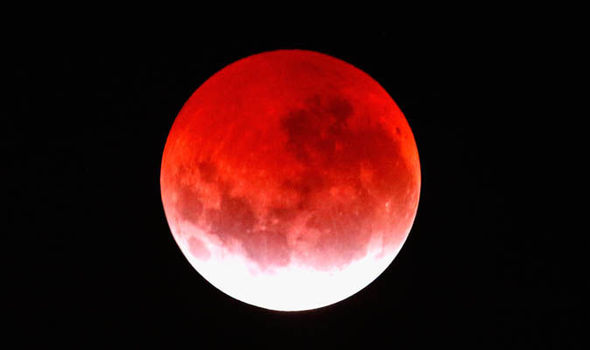
What’s inside the umbra that can light the moon up brighter than the sun?
There are just so many problems that it’s hard to pick a place to start. I don’t expect answers to all of these side-posts. They were just food for thought as we’re discussing this top-down eclipse dilemma. I truly hope you’re at least considering them, and giving them some serious thought. There are so many problems with the heliocentric model, but we’ve been indoctrinated into believing that when something makes no sense to us, a short little “sciency” explanation we can’t even understand from some “authority” will clear it up – even when the explanation makes less sense than the original absurd dilemma. We’ve been programmed to just assume that some smart people somewhere have it all figured out, and we should just believe them – even when they can’t provide a rational explanation or any observational evidence to support their claims.
Anyway, back to what we were actually discussing…
July 1, 2018 at 6:59 am#831659 mikeboll64Blocked
mikeboll64BlockedKathi: Could you give me a link to your most perplexing eclipse and I will focus on that to try to help you see what I see?
Yes, let’s start with my own video of the 1-31-18 eclipse…
As you can see, the moon is above me. It is setting in the west. The sun is about to rise behind me in the east. I want to know what is lighting the bottom of the moon really bright, and what is causing the shadow on the top of it.
July 1, 2018 at 5:18 pm#831668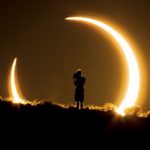 ProclaimerParticipant
ProclaimerParticipantAntarctica as it really is
Antarctica is called the frozen continent. Flat Earthers believe that no one is allowed to visit because they would discover the true nature of the earth, that is, the Earth is flat covered by a dome and the oceans are hemmed in by a ice wall that surrounds the flat disk. That ice wall they call Antarctica so there is no dispute that Antarctica exists. Only that it is a continent or not. This video shows you Antarctica and its short history. It reveals a land quite different to the one Flat Earthers claim. Flat Earthers have no video evidence of the true nature of Antarctica, while mainstream science and tourism can produce hundreds of videos perhaps thousands.
July 1, 2018 at 5:32 pm#831669 ProclaimerParticipant
ProclaimerParticipantColdest temperature ever recorded in Antarctica
Proving that the continent has people who study, probe, and photograph the frozen continent.
-98° C (-144° F).
Flat Earth scientists have no one on the ground there, no nothing about the temperature and have no videos of the continent, yet they know the true nature because reasons.
July 1, 2018 at 5:37 pm#831670 ProclaimerParticipant
ProclaimerParticipantNice video Mike.
I posted it on my Facebook wall for comment. Will post any interesting feedback here.
Maybe you will get some direct comments under the video.
July 2, 2018 at 2:15 am#831698 mikeboll64Blocked
mikeboll64BlockedThanks for that, T8. We need to get the word out to as many as we can in any way we can. 😉
I got a comment from a cat calling himself Blake Bond. His claim was that Ruapehu is just up the road so it’s no big deal. He pointed out that we are unable to see Australia from New Zealand, but we can see the moon. Interesting timing, as I am right this minute doing a time-lapse of the moon fading into the blue sky. I’ll post it later today when I’m done.
As for your Antarctica comments, remember that history is written by the victors. Jehovah has granted the god of this age permission to sift us like wheat and be victorious for a time… but that time will end. And along with it the centuries of deceptions that have led so many astray.
July 2, 2018 at 2:39 am#831700 mikeboll64Blocked
mikeboll64BlockedBTW, your Antarctica video basically says we’ve been sending scientists there for a century to study… ICE. A hundred years to study ice? Really? Think it out, man. And in the off chance you have a moment of open-mindedness, take that opportunity to listen to the NASA scientist who was sent there via Christchurch for the sole purpose of incorporating data on the interior so we can see something other than white CGI splotches over the “southern continent” when we search on Google World. (That right there is a joke, because don’t we have thousands of satellites scouring every inch of our planet at any given time?)
Anyway, years later he noticed that the CGI splotches are still there, and called the project leader to see what happened to all that data he was supposedly compiling… since it never was incorporated into any program.
D4T posted the interview a while ago, but I’m sure you didn’t listen to it. Here it is again…
The guy’s story is in the first 10 minutes, if I remember correctly. He is a former NASA employee who’s been to “Antarctica”, T8. Listen to what he has to say.
July 2, 2018 at 6:20 am#831704 LightenupParticipant
LightenupParticipantMike,
That’s a lot of questions all at once. For now, I will address this video of the eclipse of yours.
you asked:
As you can see, the moon is above me. It is setting in the west. The sun is about to rise behind me in the east. I want to know what is lighting the bottom of the moon really bright, and what is causing the shadow on the top of it.
The moon is not above you, it is in front of you and behind the earth, the sun is about to come up behind you and it is in front of the earth. The moon is on its orbit from 5 degrees below the ecliptic plane to 5 degrees above the ecliptic plane. That would show a moon eclipsing from the top down. It would look the opposite on the Southern Hemisphere.
July 2, 2018 at 6:27 am#831707 LightenupParticipant
LightenupParticipantMike,
you said:
Notice how the highest annual mean temperature is always parallel to the equator. But according to your image, that would be absurd, because of the earth’s alleged 23.4 degree tilt in relation to its orbit around the sun.
Look at this picture, it should help you see the mean temperature chart more clearly.
 July 2, 2018 at 6:40 am#831709
July 2, 2018 at 6:40 am#831709 LightenupParticipant
LightenupParticipantMike,
you said:
Remember back when we were talking about how it’s summer in the northern hemisphere when the earth is supposedly 3.2 million miles farther away from the sun?
I don’t remember the diagram but I have seen diagrams of the orbit around the sun that were drawn wrong. The last post has the distance between summer and winter appearing the same from the sun. The spring and the fall are closer to the sun. Study the last diagram and see if that doesn’t help you.
July 2, 2018 at 7:26 am#831713 LightenupParticipant
LightenupParticipantMike,
I think this site will greatly help you understand why there are the three types of shadows, penumbra, umbra, and ante-umbra.
https://www.timeanddate.com/eclipse/shadows.html
Umbra, Penumbra, and Antumbra: Why Are There 3 Shadows?
On their journey through space, the Earth and the Moon cast 3 different shadows causing different types of solar and lunar eclipses. Why are there 3 shadows?
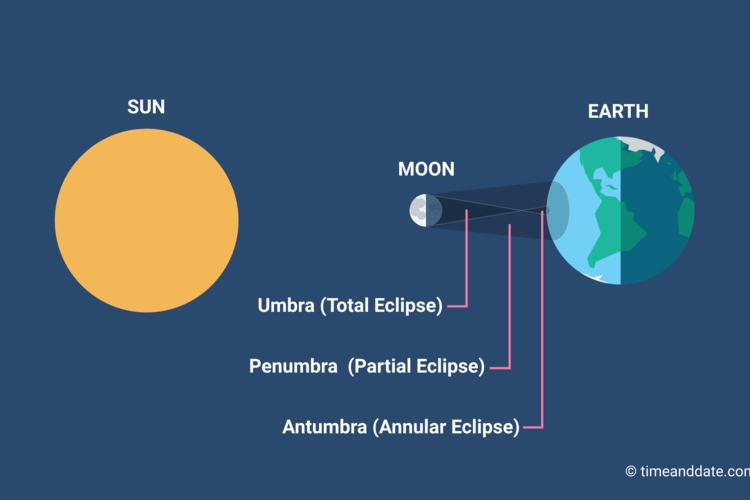
The Moon’s umbra, penumbra, and antumbra.
Eclipse Type Depends on Shadow Type
If the Moon’s shadow falls on Earth, we get to see a solar eclipse; the Earth’s shadow falling on the Moon results in a lunar eclipse. However, there are different types of solar and lunar eclipses. A solar eclipse may be total, partial, or annular; a lunar eclipse may be total, partial, or penumbral.
The type of eclipse we experience depends on the type of shadow that is involved. Both the Moon and Earth cast 3 shadows:
The umbra is the shadow’s dark center portion, while the penumbra and the antumbra are different types of half-shadows.
Shadow Experiments
To understand why the Earth and the Moon have 3 types of shadows, let’s start on a smaller scale. The number and types of shadows created by an opaque object depend on its size in relation to the size of the light source. However, their absolute size is irrelevant, so a basketball illuminated by a large lamp produces the same shadows as the Moon illuminated by the Sun.
So imagine that you are in a windowless room with 1 light source and 1 round object that casts a shadow, say, a basketball. Both the light source and the basketball are at the same height as your head. You are standing on the side of the ball exactly opposite to the light source, facing it, so the order is: light source – basketball – you.

A punctual light source creates only an umbra. 1st Experiment: Umbra Only
Rule: If the light emanates from a punctual light source, the object casts only 1 type of shadow: an umbra.
Let’s say the light source is a tiny flashlight pointing into your direction. If you look into the direction of the lamp from behind the basketball, it is entirely invisible as the ball blocks the view and the light rays don’t reach you. The ball’s shadow is uniform, it only has an umbra.
If you move to the side, the flashlight immediately becomes visible as soon as you leave the shadow.
2nd Experiment: Umbra and Penumbra
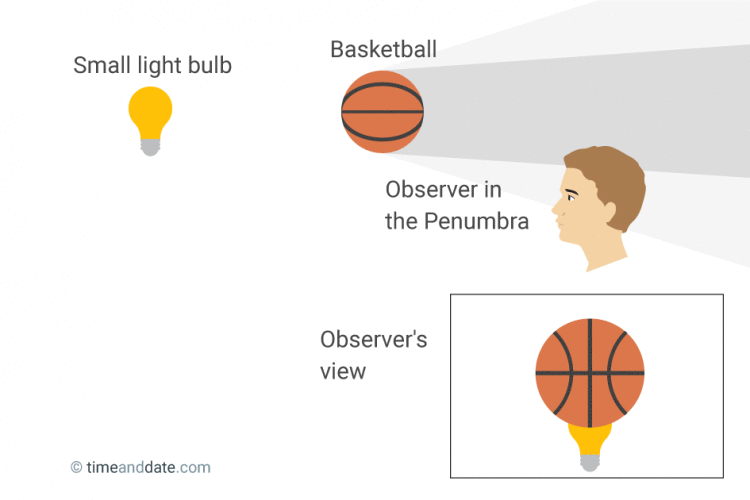
A light source with a larger surface area creates 2 shadows. Rule: If the light source is not punctual but has a larger surface area, a 2nd type of shadow appears around the object’s umbra: the penumbra.
Now the light source is a round lamp that is a little smaller in diameter than the basketball. If you line up with the lamp and the ball, no light is visible because you are within the ball’s umbra. However, as you move to either side, part of the light source becomes visible. That’s the penumbra.
If you move further to the side until you can see all of the lamp’s surface, you have left the penumbra.
3rd Experiment: Umbra, Penumbra, and Antumbra
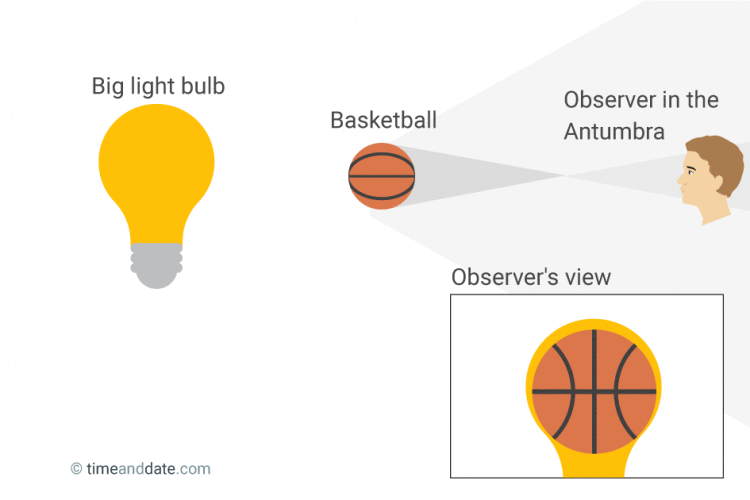
If the diameter of the light source exceeds that of the object, an antumbra appears. Rule: If the diameter of the light source is larger than the diameter of the object, a 3rd type of shadow appears where the V-shaped umbra ends: the antumbra.
In this experiment, the light source is another round lamp, but this time it has twice the ball’s diameter. Imagine once more that you are looking at the lamp from behind the ball. As long as you are fairly close to it, the ball’s apparent size exceeds the lamp’s apparent size. You are within the umbra, and the lamp is invisible.
However, as you move away from the ball, its apparent size decreases. At some point, the basketball will appear smaller than the lamp. A ring of light will appear around the ball as the outer rim of the lamp comes into view. You have just entered the basketball’s antumbra.
3 Shadows, 6 Types of Eclipses
Our solar system resembles the set-up of the last experiment. The Sun is a very large light source, its diameter exceeding that of both the Earth and the Moon. This means that, on their journey through space, both objects produce all 3 types of shadows.
Depending on which shadow type is involved, we can experience 3 different types of solar eclipses and 3 different types of lunar eclipses on Earth:
Umbra Eclipses
The umbral shadow can produce the following eclipses:
- Total solar eclipse – the Moon’s umbra falls on the Earth’s surface, and the observer is within the umbra.
- Total lunar eclipse – the Earth’s umbra completely covers the Moon.
- Partial lunar eclipse – the Earth’s umbra covers only part of the Moon.
Penumbra Eclipses
The penumbral shadow is involved in these eclipses:
- Partial solar eclipse – the Moon’s penumbra falls on the Earth’s surface, and the observer is within the penumbra.
- Partial lunar eclipse – the Earth’s penumbra covers the area of the Moon’s visible surface that is not covered by the umbra.
- Penumbral lunar eclipse – the penumbra covers all or part of the Moon, the umbra misses it.
Antumbra Eclipses
The antumbral shadow can only cause 1 type of eclipse:
- Annular solar eclipse – the Moon’s antumbra falls on the Earth’s surface, and the observer is within the antumbra.
Also, about the red moon, it has to do with the light rays that aren’t canceled out by the atmosphere and the nearness of the earth to the moon as far as I can tell. Different light waves have different wave lengths.
July 2, 2018 at 7:42 am#831714 mikeboll64Blocked
mikeboll64BlockedT8: If the earth is flat, why can’t we see forever?
Because we can only see as far as the moisture/dust/pollution in the air allows us to see. I made a time lapse this morning of the daytime moon fading into the sky before it “set behind the curve of the earth”. The video is a little jerky, as I am still learning how to work the equipment, but you can see the moon just fade away at the end…
I also took a series of photos a while back documenting the moon getting dimmer and dimmer while it was still very high in the sky…

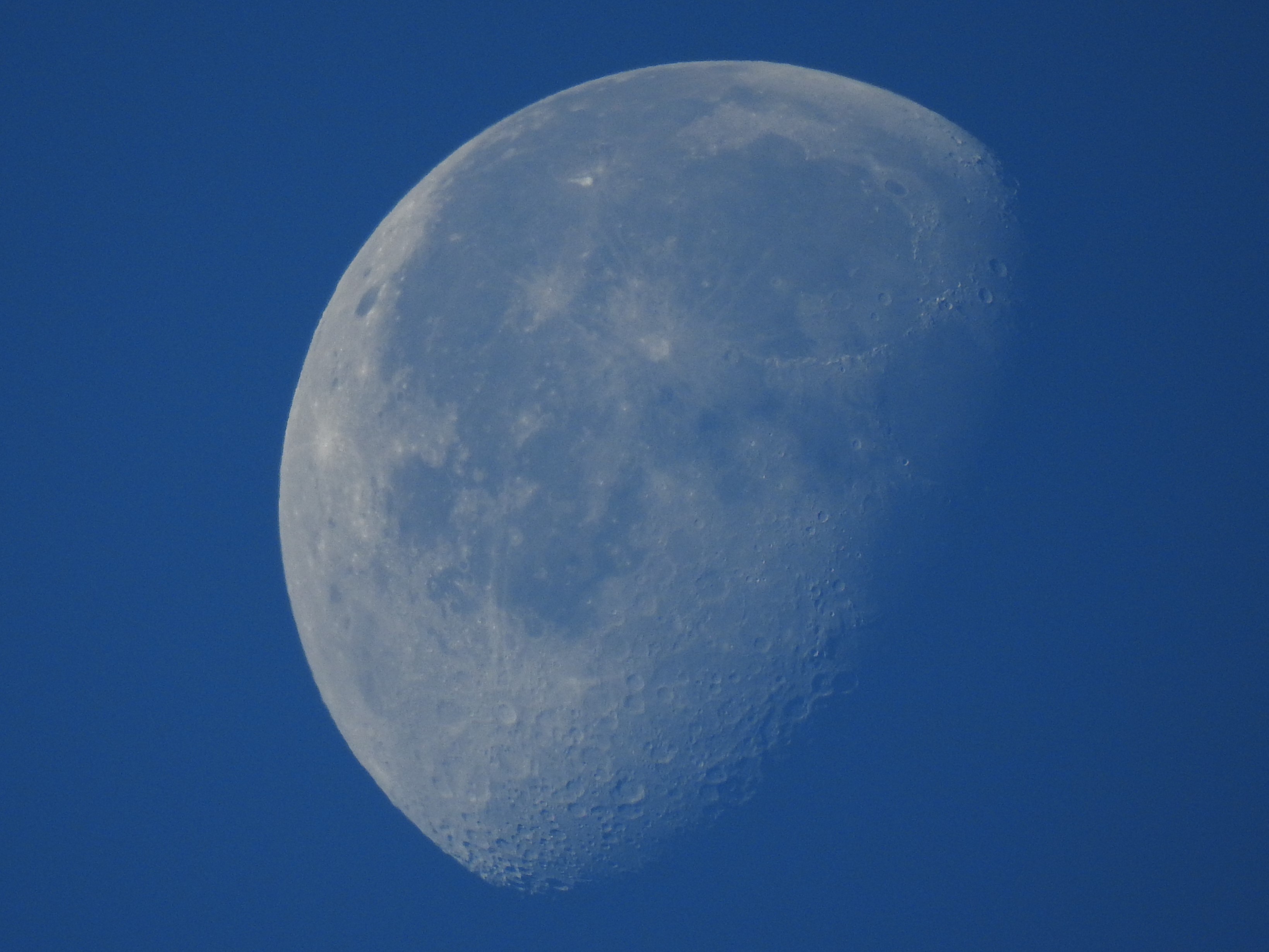
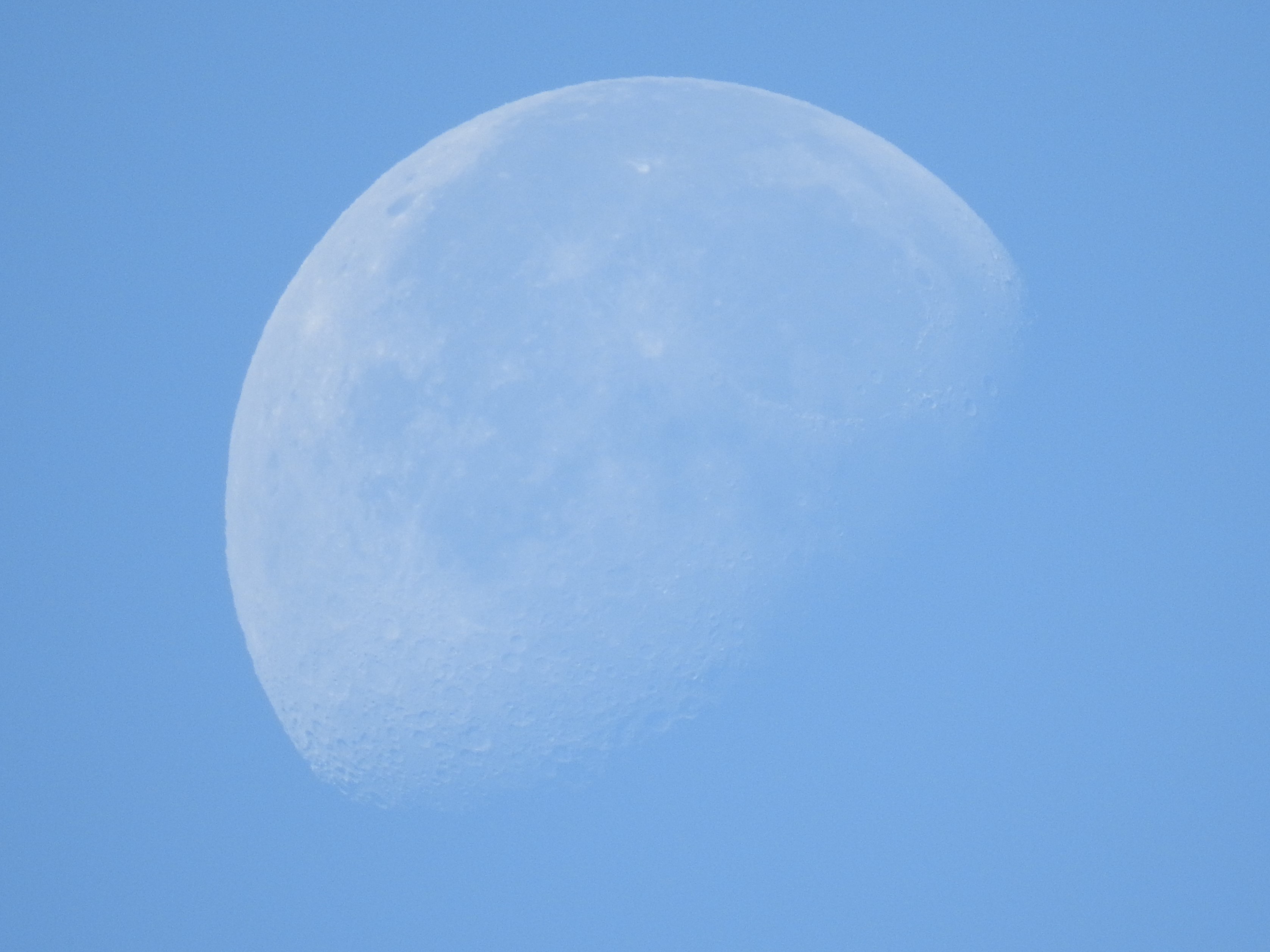
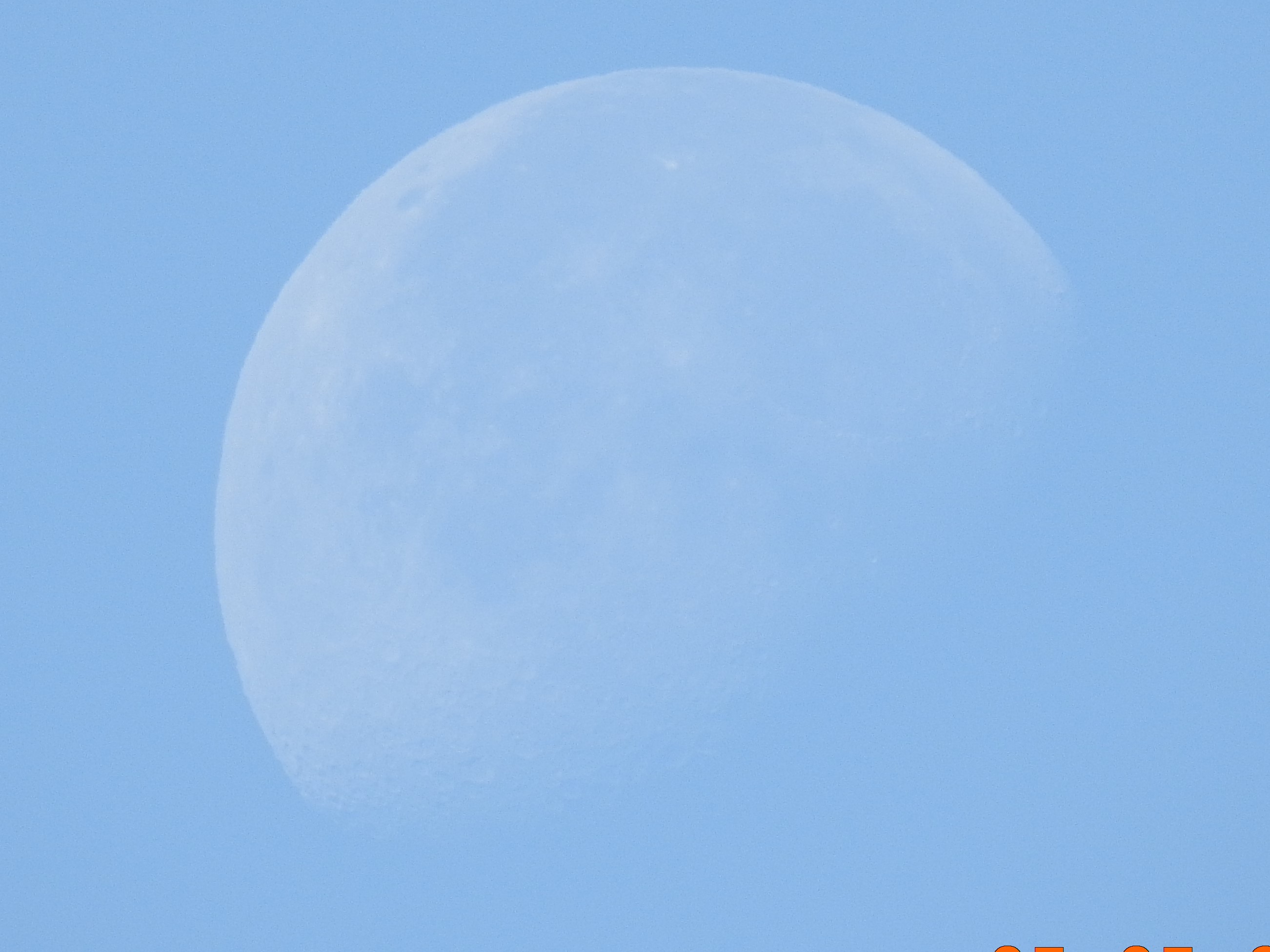
But the answer to why we can’t see forever on a flat earth is because the condition of the air just won’t let us. It does, however, allow us to see objects a heck of a lot farther away than we could if we lived on a spinning ball 25,000 miles in circumference – as my Mount Ruapehu and Superstition Mountain videos clearly show… as well as the thousands of other long distance videos and photos you can find on the web.
- AuthorPosts
- You must be logged in to reply to this topic.
